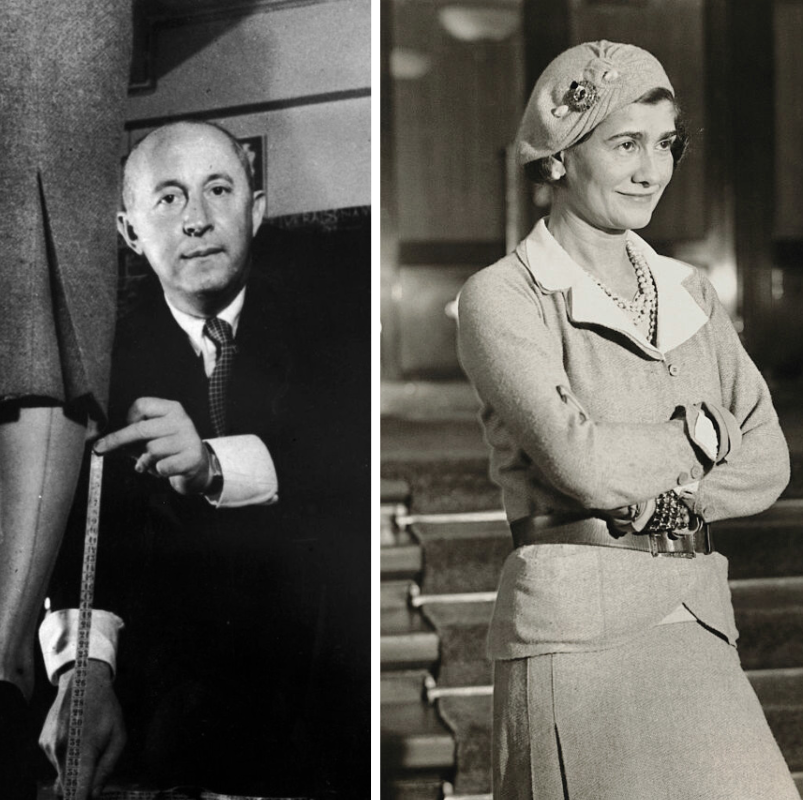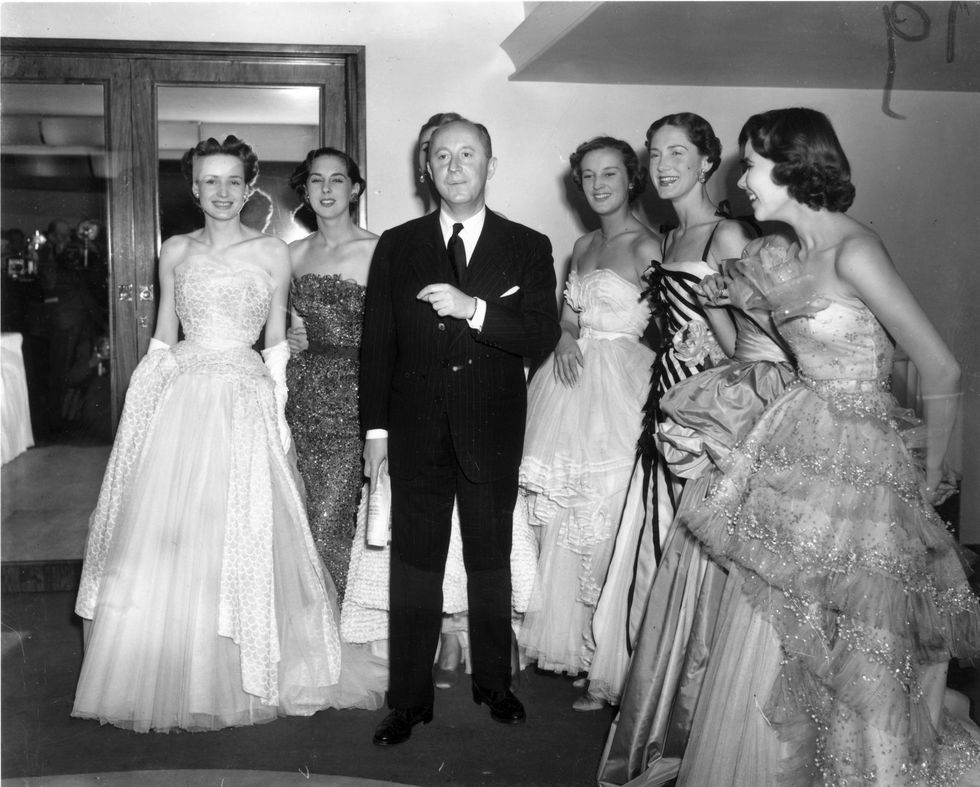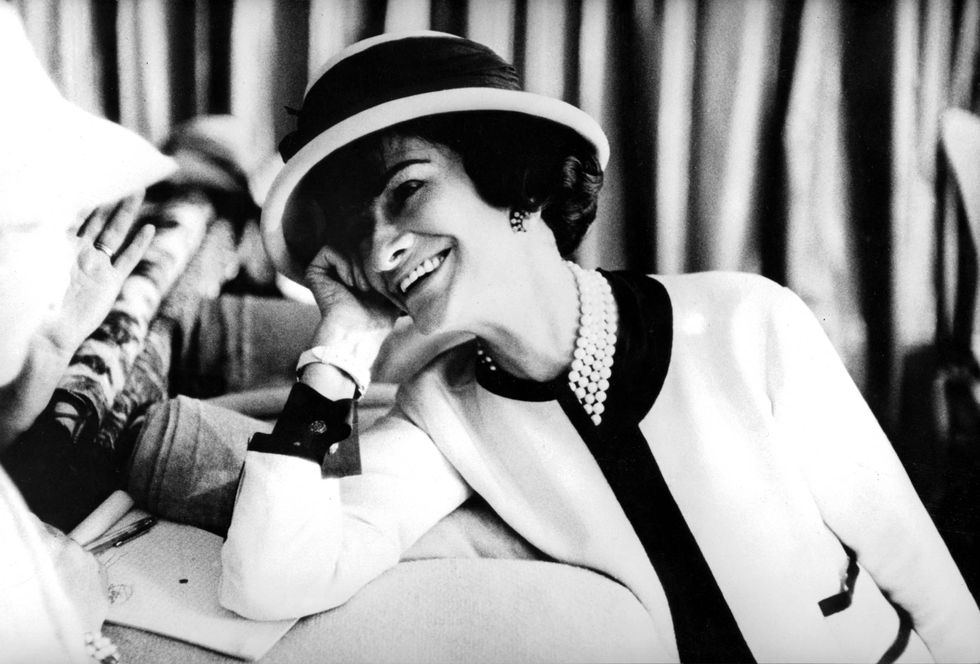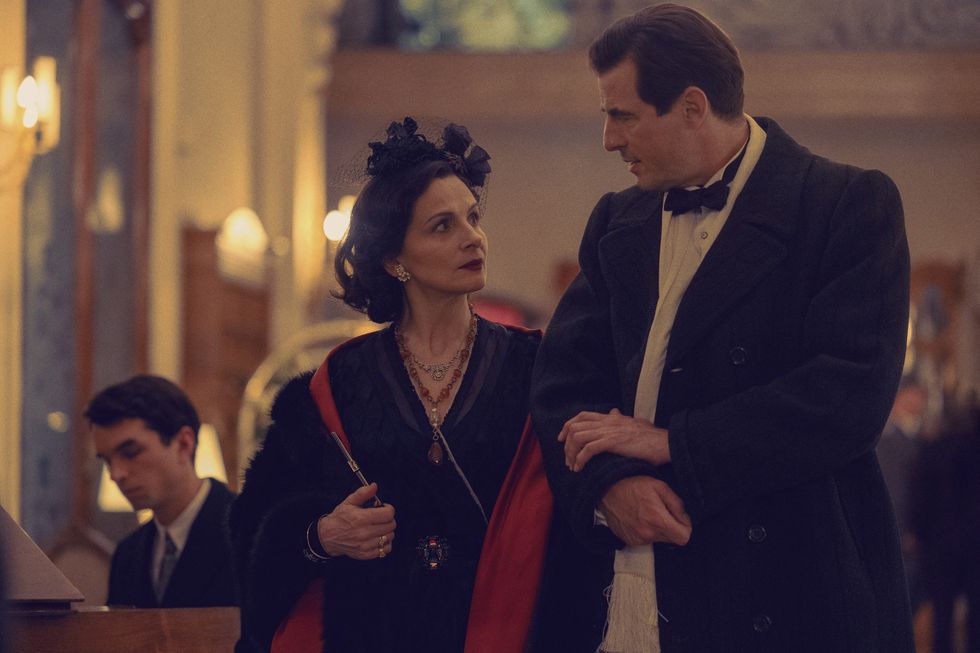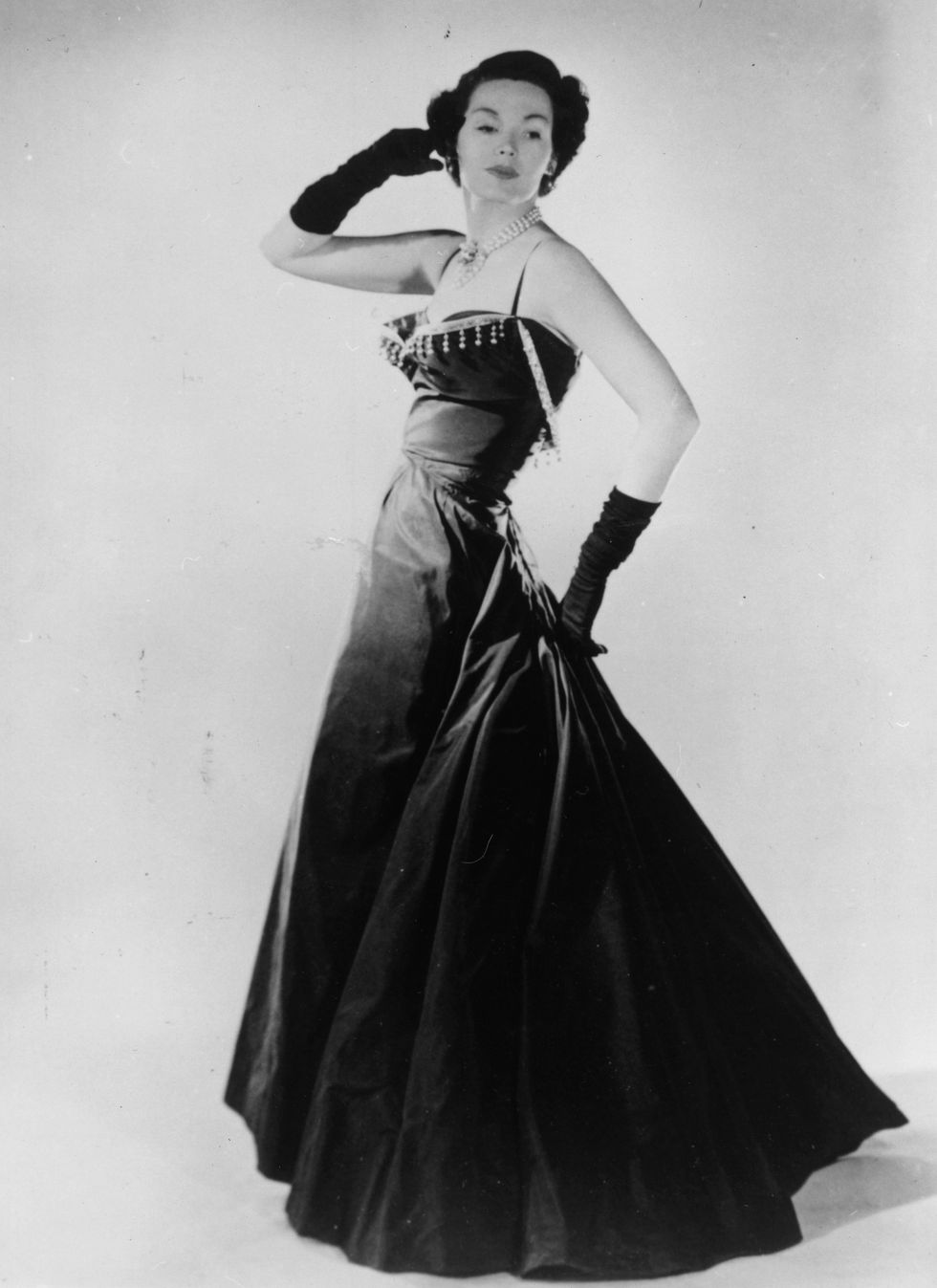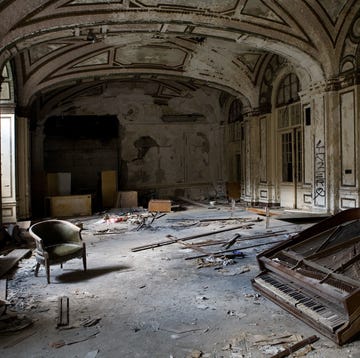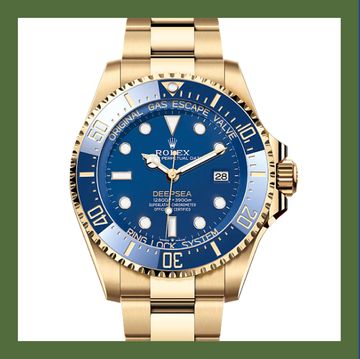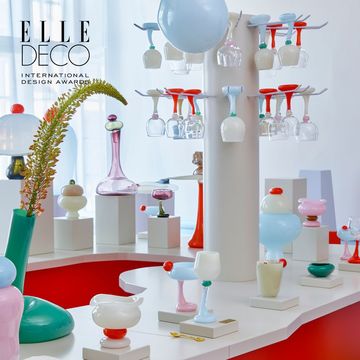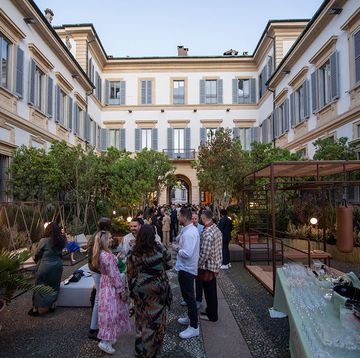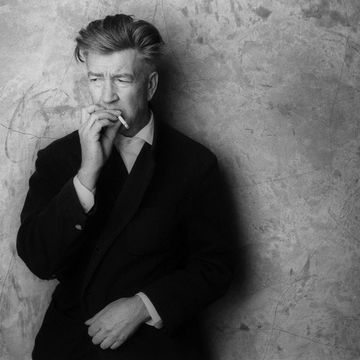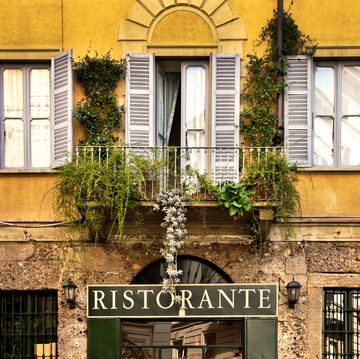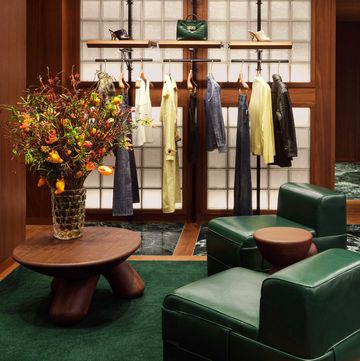No one did rivalry—or put-downs—quite like Gabrielle “Coco” Chanel. When referring to her sartorial opponent Elsa Schiaparelli, who had no formal training in sewing, she scathingly called her “that Italian artist who makes clothes.” When designer Paul Poiret observed Chanel wearing black and archly asked for whom she was mourning, she quipped, “For you, monsieur.” But nobody felt the whip of Chanel’s tongue more mercilessly than Christian Dior, who first strutted onto the Parisian scene in 1947 and took the fashion world by a storm. The tiff between the two couturiers in war-torn Paris will be placed front and center in a glamorous new miniseries, The New Look, set to hit Apple TV on February 14. But as you watch the drama unfold across each of the 10 episodes, you might be as curious as we are: What really happened between these two fashion icons? Here’s what we know.
When did the rivalry between Coco Chanel and Christian Dior begin?
Dior (played in the series by Ben Mendelsohn) presented his first collection in February 1947 at 30 Avenue Montaigne in Paris. It featured a lineup of looks that were a masterclass in structured silhouettes—cinched waists, padded hips, and layer upon layer of unashamedly decadent tulle, taffeta, and silk organza. “It’s quite a revolution,” remarked Carmel Snow, the former editor in chief of the American edition of Harper’s Bazaar, at the time, dubbing this revolutionary silhouette “the new look.” Dior exploded on the fashion scene and transformed the wardrobe of the contemporary woman almost overnight, leading to a rejection of the war years’ practicality in women’s tailoring.
Chanel (Juliette Binoche), as one might suspect, had opinions. “Look how ridiculous these women are,” Chanel—who was 22 years Dior’s senior—famously declared. “[They’re] wearing clothes by a man who doesn’t know women, never had one, and dreams of being one.” Thus began a two-decade-long tiff between what would become two of the most esteemed fashion houses in the world.
What did Coco Chanel and Christian Dior disagree about?
Chanel opened her first independent shop on Rue Cambon in Paris in 1910 at the age of 27. What she was doing felt revolutionary in its own right. Aimed to liberate women by emphasizing functionalism and versatility, Chanel broke with typical haute-couture styles by placing an emphasis on the functionality of sportswear and menswear, including service and military uniforms. Her skirts had no waistbands, her boxy tweed jackets had two to four outside pockets, and braided cuffs complemented military-like buttons. Her clothes were pragmatic, adaptable, masculine, and designed with realistic lifestyle applications that fostered self-reliance. Dior’s debut in 1947 (by that time, Chanel was a powerhouse fashion brand with 310 boutiques worldwide) could not have been more different.
In a post–World War II world, Dior met a pent-up desire for opulence in high fashion with an exquisitely glamorous bounty of billowing tulle skirts, elongated silk gowns, and tiny wasp waists inspired by Dior’s love of the Belle Epoque. Some styles, like the famed Junon dress, were reminiscent of the feathers of a peacock, frosted with iridescent beading and embroidery. Others, like the ultrafeminine Eugénie gown, were composed of cascading layers of limitless tulle yardage that mimicked the blooming effect of a flower. They weren’t necessarily the most comfortable clothes to wear—some of his evening dresses weighed as much as 60 pounds—but their ability to bring fantasy to a modern world gave Dior a dominant voice in the world of fashion.
Chanel was not afraid to express her disapproval. She accused Dior of dragging women back to the 19th-century ideals of femininity—upholding notions that women were objects to be admired by men. “Dior doesn’t dress women. He upholsters them,” she was known to have said, adding that a woman sitting down in a Dior dress looked like “an old armchair.”
Dior politely refrained from publicly voicing his thoughts on Chanel. In his memoir, however, he generously wrote that Chanel’s “personality as well as her taste had style and elegant authority.”
How will their stories play out in the series?
The 10-part miniseries will offer an insightful perspective into each atelier’s stories, which were heavily influenced by the political tension of a war-torn Paris. We will see an interpretation of Dior’s debut collection at 30 Avenue Montaigne in Paris. We also will be privy to the story of Dior’s sister, Catherine. She was a crucial figure of the French Resistance who, after being repeatedly tortured by the Gestapo (and never betraying her comrades), was sent to a French prison that had been commandeered by the Germans, and later a series of concentration camps that she miraculously survived.
Meanwhile, Chanel’s sympathies toward the Nazis will also play out in the series. Chanel loved a Nazi officer named Hans Günther von Dincklage and became a Nazi spy—whose agent code name was Westminster—and went on missions around Europe to recruit agents for the Third Reich. She was brought in for questioning on the grounds of being a Nazi intelligence operative and fled to Switzerland to avoid criminal charges.
Will the two rivals go head-to-head in the series? The two icons’ longstanding feud will be seen more broadly in the work they were putting out and their commentary (and one another’s) on it than through exact in-person moments. No matter how much editorial liberty the series’ writers chose to take, we’ll be watching with popcorn in anticipation of Chanel’s deliciously biting remarks.
Rachel Silva, the Assistant Digital Editor at ELLE DECOR, covers design, architecture, trends, and anything to do with haute couture. She has previously written for Time, The Wall Street Journal, and Citywire.
